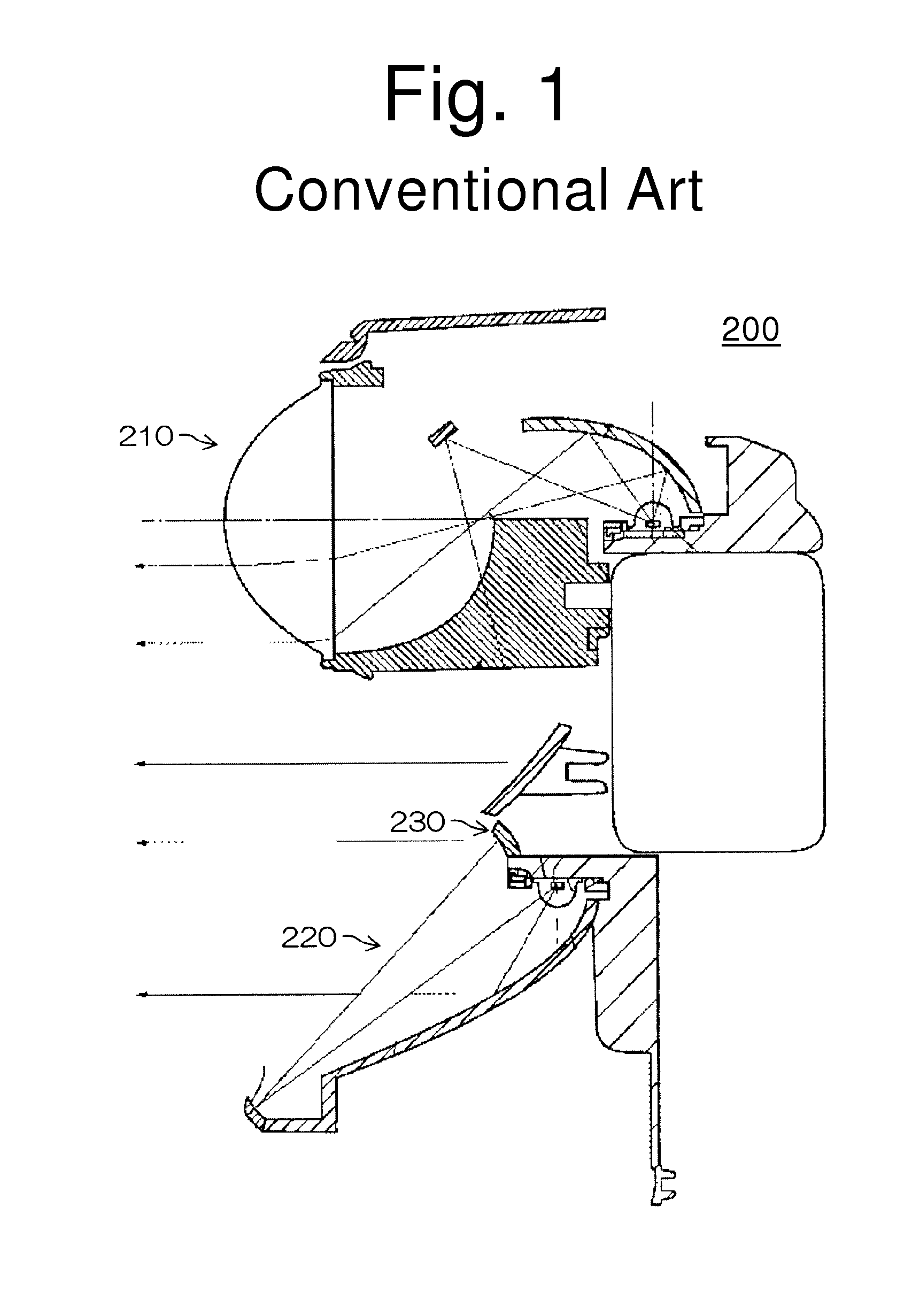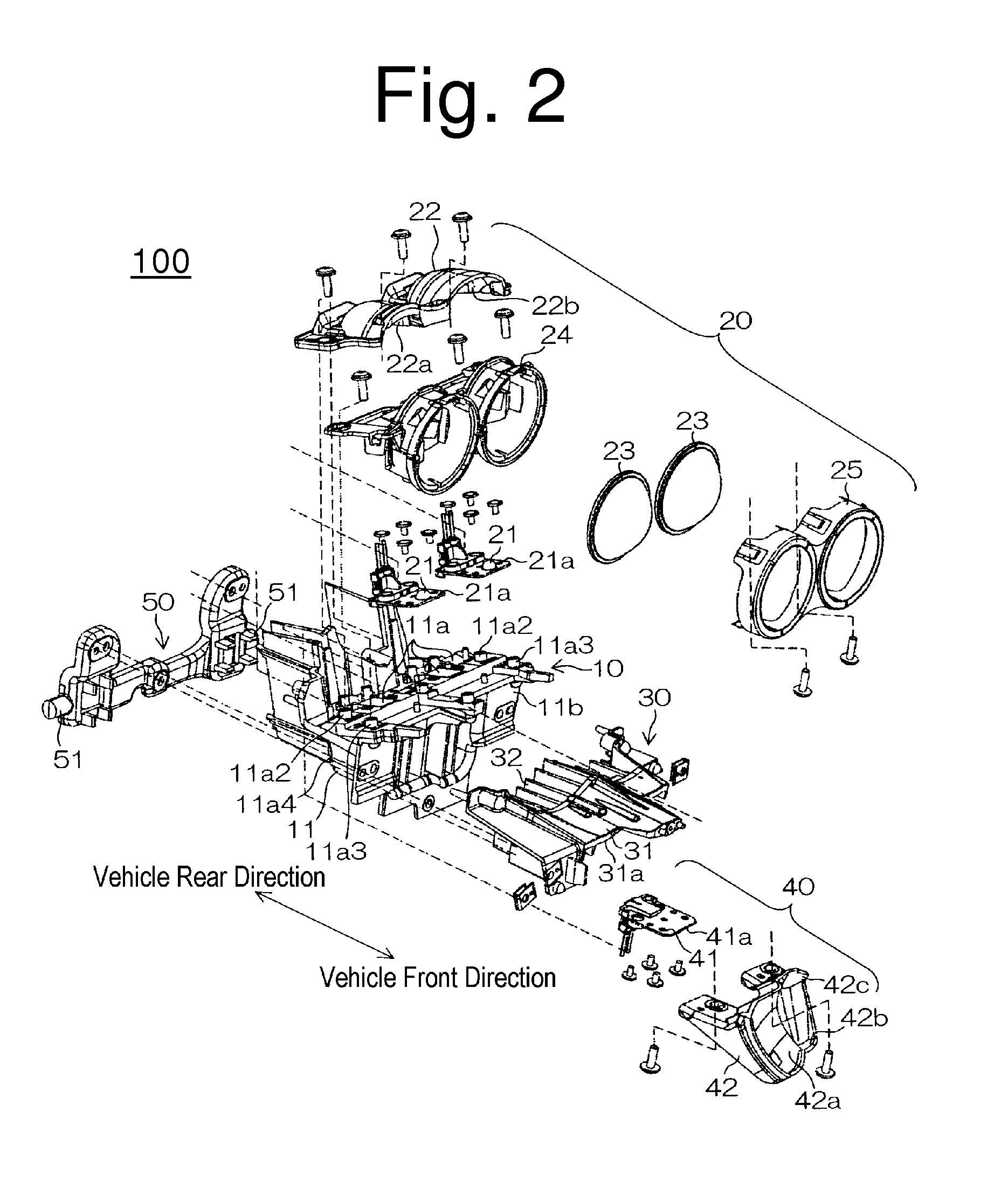Vehicle light
a technology for vehicles and light sources, applied in the field of vehicle light, can solve the problems of deterioration, difficult adjustment of optical axes, pedestrians' inability to see the vehicle light, etc., and achieve the effect of suppressing the adverse effects of vibration on the vehicle light and reducing the load applied to the adjuster
- Summary
- Abstract
- Description
- Claims
- Application Information
AI Technical Summary
Benefits of technology
Problems solved by technology
Method used
Image
Examples
Embodiment Construction
[0027]A description will now be made below to a vehicle light of the presently disclosed subject matter with reference to the accompanying drawings in accordance with exemplary embodiments.
[0028]The vehicle light 100 of the present exemplary embodiment can be applied to a vehicle headlight, a fog light or the like for an automobile or other vehicle. As shown in FIG. 2, the vehicle light 100 can include a first heat sink 10, an upper optical system 20 (or first optical system), a second heat sink 30, a lower optical system 40 (or second optical system), and a stay 50, for example.
[0029]The first heat sink 10 can include a first heat sink body 11 disposed on the front side of a vehicle body, and a first heat radiation fin 12 disposed on the rear side of the vehicle body.
[0030]The upper optical system 20 can be a projection optical system configured to form a part of a desired light distribution pattern. As shown in FIGS. 2 and 3, the upper optical system 20 can be composed of a plural...
PUM
 Login to View More
Login to View More Abstract
Description
Claims
Application Information
 Login to View More
Login to View More - R&D
- Intellectual Property
- Life Sciences
- Materials
- Tech Scout
- Unparalleled Data Quality
- Higher Quality Content
- 60% Fewer Hallucinations
Browse by: Latest US Patents, China's latest patents, Technical Efficacy Thesaurus, Application Domain, Technology Topic, Popular Technical Reports.
© 2025 PatSnap. All rights reserved.Legal|Privacy policy|Modern Slavery Act Transparency Statement|Sitemap|About US| Contact US: help@patsnap.com



